Gareth Evans on The Raid at 10: ‘He must have thought I was some crazy white guy’
The Indonesian actioner, with its high-impact fighting and claustrophobic setting, was an unexpected triumph. Annabel Nugent speaks with Evans and lead star Iko Uwais about making a martial arts movie for the modern era

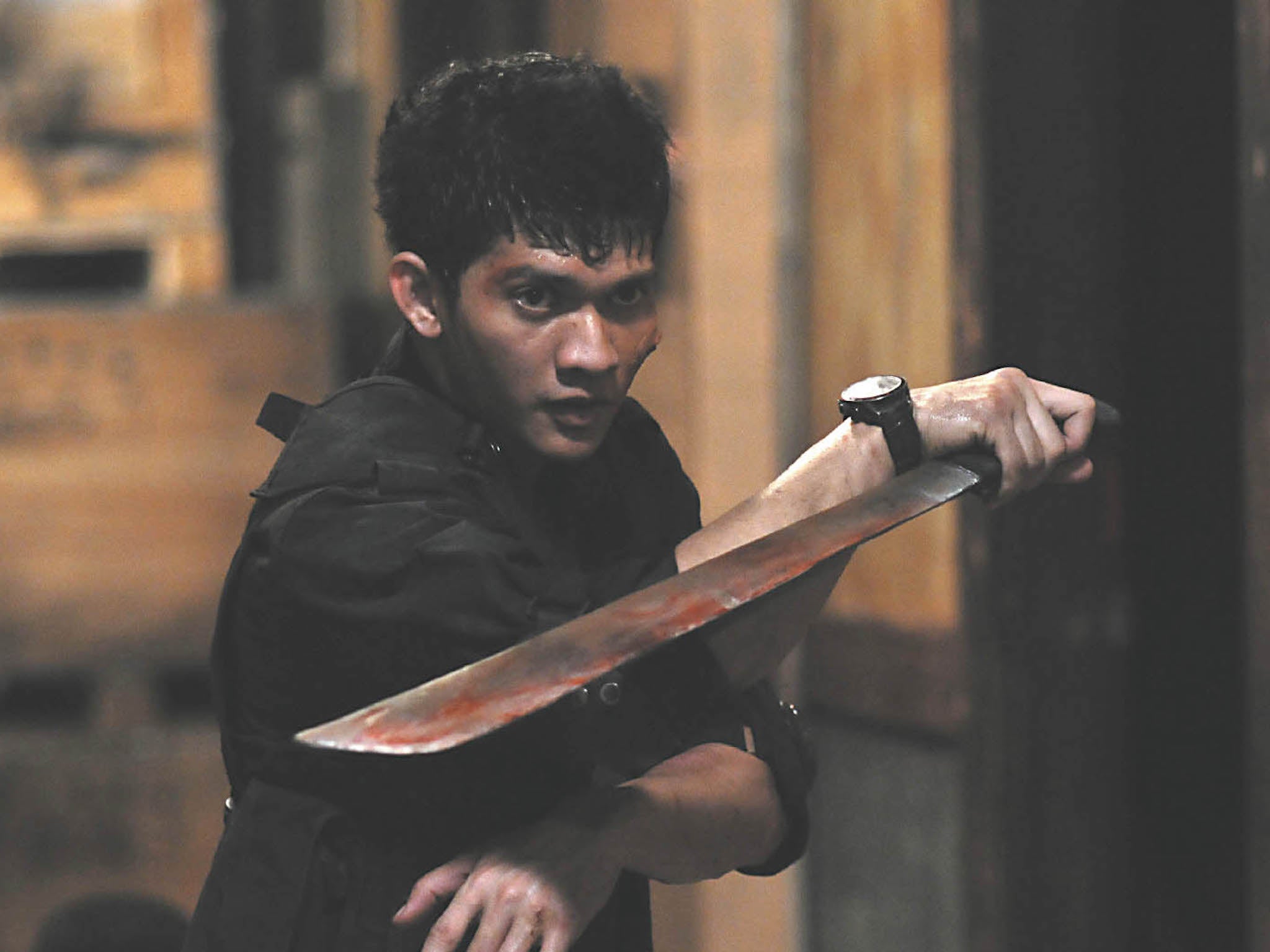
Your support helps us to tell the story
From reproductive rights to climate change to Big Tech, The Independent is on the ground when the story is developing. Whether it's investigating the financials of Elon Musk's pro-Trump PAC or producing our latest documentary, 'The A Word', which shines a light on the American women fighting for reproductive rights, we know how important it is to parse out the facts from the messaging.
At such a critical moment in US history, we need reporters on the ground. Your donation allows us to keep sending journalists to speak to both sides of the story.
The Independent is trusted by Americans across the entire political spectrum. And unlike many other quality news outlets, we choose not to lock Americans out of our reporting and analysis with paywalls. We believe quality journalism should be available to everyone, paid for by those who can afford it.
Your support makes all the difference.Gareth Evans was an action fan before he was legally old enough to be one. As a kid, he liked films that would jump-start his adrenalin but was, by his own admission, too “chicken-s***” for horror. Instead, he would quench that (blood) thirst with martial arts movies, he tells me via Zoom. On the upper floor of a video shop in the Welsh village where he grew up, Evans discovered the gloriously violent world of Bruce Lee, Jackie Chan, and John Woo. Some 30 years later and Evans’s own film The Raid has earned its spot on that same VHS shelf. Or at least it certainly would’ve done had video shops not gone extinct.
It was The Raid, a low-budget, unassuming Indonesian film, that made Evans, a Hirwaun native, a genre film sensation. Celebrating its 10-year Indonesia anniversary today, The Raid was a triumphant throat punch of a movie, a balls-to-the-wall unapologetic celebration of martial arts. It was a siege movie that gave action flicks a fresh face – literally, both in the form of Iko Uwais, its breakout star who has gone on to become a Netflix favourite, and in pencak silat, the unrelenting Indonesian martial art at its bloody centre. There is no artifice to The Raid. Its very title boldly declares the film’s subject; nothing more, nothing less. The raid in question is carried out by an elite group of police officers who ambush a high-rise building run by a crime lord who surveys everything from the top floor. All that separates him and prison are 15 storeys and an army of machete-ready henchmen waiting on each one. Let the carnage commence.
When The Raid debuted at the Toronto Film Festival in 2011, it became an instant classic. Critics, typically snobbish about grindhouse fare, praised its action sequences with compound adjectives like bone-crunching, skull-splintering, face-pummelling, and so on. Most importantly, the diehard martial arts acolytes were fans, too. The Raid was a success on all counts, making it all the more surprising that the film was born primarily out of budgetary constraints.
Before The Raid, there was Merantau. The Jakarta-set 2009 actioner was Evans’s first ever professional venture and first collaboration with Uwais. It was a modest success that made little noise. After Merantau, Evans went about writing another film to showcase the brutal talents of his newfound leading man. “It was going to be about juvenile delinquents in a tough school, you know, borrowing from the Crow Zero playbook,” recalls Evans, referencing the ultra-violent 2007 Japanese films based on Hiroshi Takahashi’s manga series. “We took it around and pitched it but could not for love nor money get the budget in place to make the film. It was too big, too ambitious.” Over the next year and a half, Evans languished trying to conceive a smaller, cheaper vehicle for the fight sequences he and his team had already devised.
Seeking inspiration, Evans did what every film fanatic does: he watched a shedload of movies. “A lot of John Carpenter,” he recalls. It’s the first of many times that the director will name-check the Eighties icon in our conversation. But the spark didn’t well and truly ignite until Evans saw Romain Gavras’s nine-minute music video for MIA’s track “Born Free”: a depiction of a grim dystopia in which policemen round up redheads in an ethnic cleansing of sorts. “I was blown away by the over-the-shoulder feel of that video following this Swat team,” he says. Evans found an investor willing to shell out $1.1m (£884,000) to fund his new idea. It wasn’t much but it was enough.
Evans met Uwais much earlier than that. In 2007, he had been in Jakarta shooting a documentary about pencak silat. Evans was filming at the silat gym where Uwais trained. Instantly, he knew he was witnessing a star in the making. “It was astonishing to me that myself and Matt Flannery [The Raid’s DP whom Evans has known since university and whom he has continued to work with ever since] kept returning to Iko. We realised all our footage kept focusing on him. He had this natural screen presence about him. He was a lot skinnier back then and a lot younger, but he just had this charisma,” recalls Evans. “Something in the eyes that could just captivate you.”
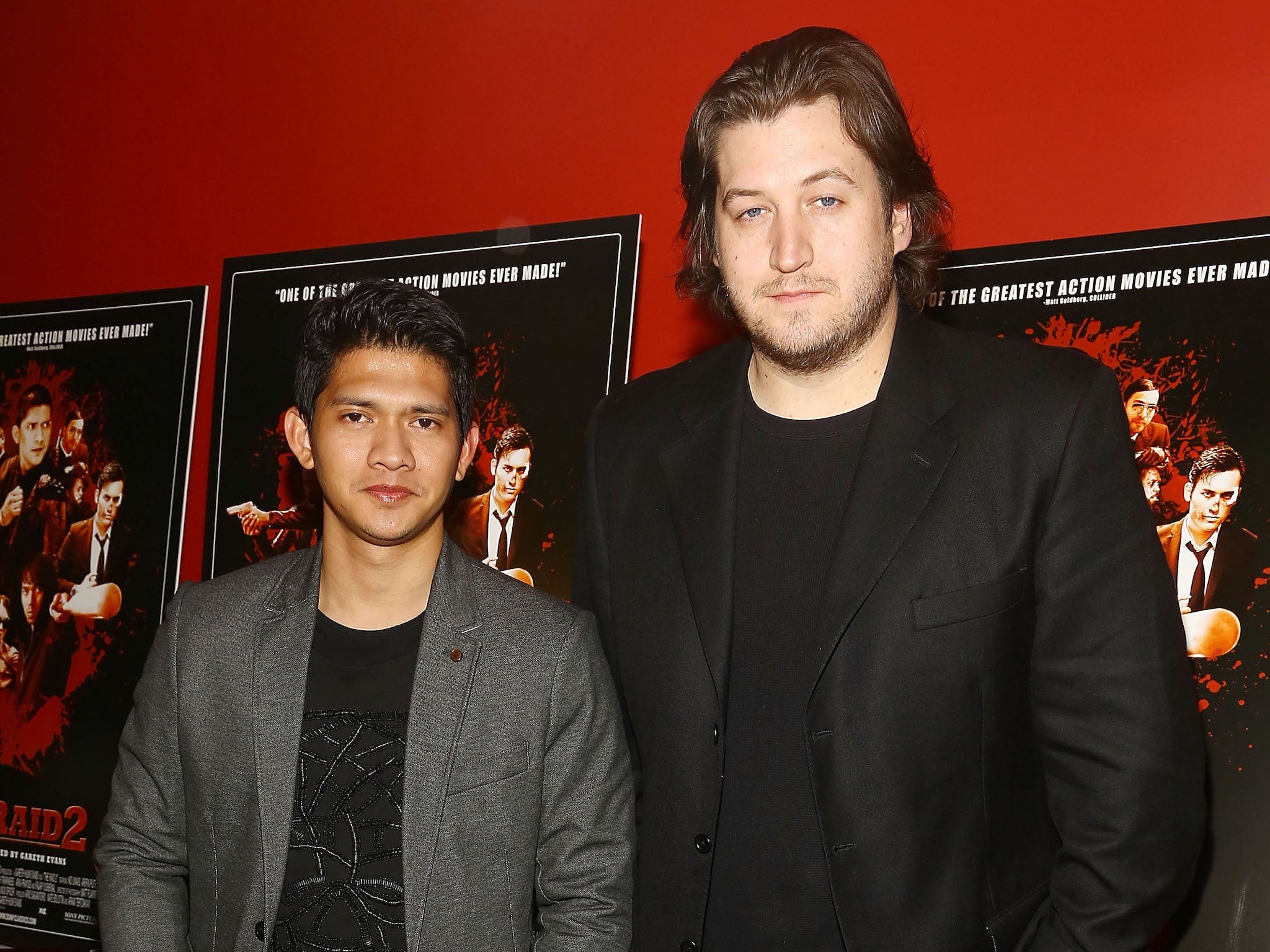
That “something in the eyes” certainly twinkles in The Raid. As the lean, mean but idealistically green Swat agent Rama, Uwais is fast and fluid. Unlike actors-turned-fighters, Uwais is a fighter’s fighter. The real deal. He began studying silat when he was 10 years old. “Silat is nothing new to my family, it’s been there for generations,” Uwais tells me over email. He would train with his silat master three times a week, four hours a day. As a child, he loved Eighties Indonesian martial arts films such as Si Pitung or Si Jampang with Barry Prima (though it’s Jackie Chan whom he credits as his biggest influence). In Uwais, Evans found his muse. “I remember saying to Iko as soon as I met him, ‘We’re gonna do a film together and you’re gonna be a really famous movie star.’ He must’ve thought I was some crazy white guy,” laughs Evans. Uwais recalls a different response. “Here he was, a director who has never shot a movie, asking me, an inexperienced guy that literally no one knows, to lead this martial arts movie for the modern era. I had nothing to lose. I quit my day job [as a delivery driver] and joined.”
Merantau may have flown under the radar, but Evans’s first film already showcased the onscreen appeal of silat. “It has this ability to adapt and shift from higher to lower attacks in an instant. It’s very dexterous. The way they move, the twists of the body, there is a kind of rhythm to it,” says Evans. Silat capitalised on everything he most loved about martial arts. “On an analytical level, what’s so special about the Asian approach to action is that there is a time signature to the fighting. Punch, punch, kick, block, block, block, punch, punch, block. It’s like percussion. It’s got rhythm.”
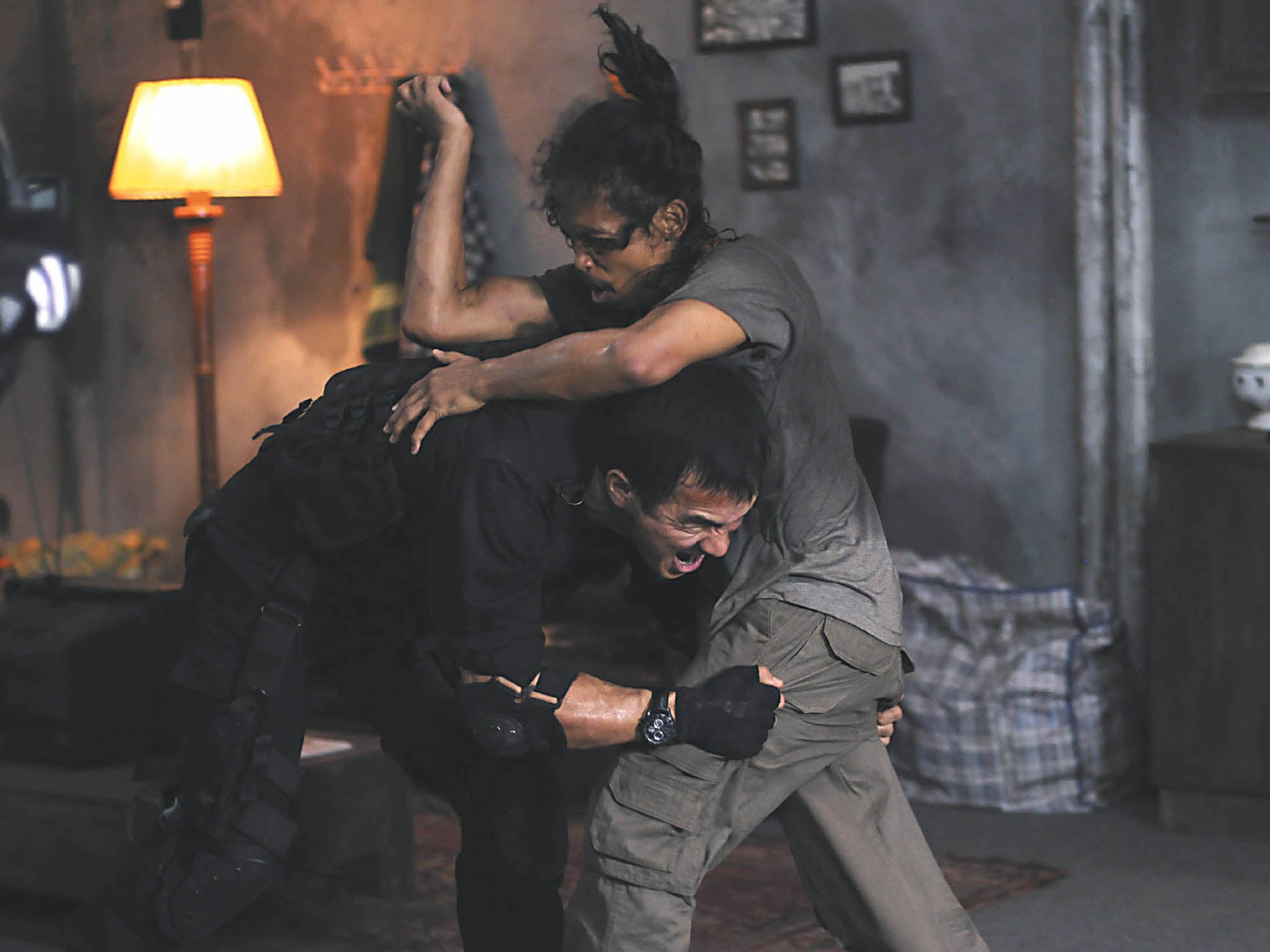
The Raid is a different beast to its predecessor. Merantau is violent, but there is a slickness to the fighting that is furiously scrubbed out in The Raid. “The violence became more essential because it’s about a Swat team trained to kill or be killed. It’s not about trying to incapacitate each other. It’s about trying to kill one another,” says Evans. That change in mentality led to a shift in choreography. “I’d discuss with Iko and Yayan [Ruhian, a choreographer on the film who also plays its stringy-haired villain Mad Dog] the reality of these fights. ‘Could this guy feasibly get up?’ Because really you would never let him be in a situation where he could get up. It’d be like, ‘OK, yeah, a stab to the leg is good… but if you drag the knife all the way through, he couldn’t ever get up and so he’d never pose a threat later on.” Evans continues, “It was about finding all those little OTT fight moments – we call them punchlines – that we hadn’t seen in films before.”
The Raid gave international audiences their first entry into silat, and local viewers a different way to appreciate it. “There were a lot of Indonesian films made in the Seventies and Eighties that had silat and karate built into them, but most had these mystical elements. People jumping into trees and turning into jaguars, that kind of thing. They were fun movies but not great movies,” says Evans, before adding with a laugh, “Probably going to get vilified for that.”
“Many people had identified silat for its dance-like movements, for its beauty and its grace,” adds Uwais. “But The Raid shows it in a fighting situation. It’s a very efficient, fast, hard-hitting form of martial art. Many fatal blows are trained in silat.” And many a fatal blow is dealt in The Raid. The body count is impossible to keep up with. To stay true to the realities of silat, Evans and his team drew up a list of rules. “No acrobatics, no slow-mo, no replay of stunts,” he says. “We just wanted it to be pure.” Evans remembers telling his team, “Look, we love what Tony Jaa does and we love what Jackie Chan does, but we aren’t going to do that. They’ve mastered that so let’s not put ourselves into a no-win situation by trying to replicate it.”
You have the precautions in place to make sure everybody comes away from the scene and can go home and relax. Because at the end of the day, we’re only making films; we’re not curing diseases.
It takes no less than three weeks to design a three-minute fight scene, although typically it’s four. In pre-production, Uwais and Yayan will map out the minute moves of the fighters before filming a “Tai Chi video storyboard” of the scene. “Everyone’s moving at 40 per cent so I can figure out my camera movements before anyone gets needlessly injured or tired,” says Evans. Next, they’ll do it all guns blazing but without the added effects. “You know that if it looks good with crash mats, cardboard boxes, no sound and rubber props, it’s going to look amazing once that production value is added.” He picked up this video storyboard trick while watching Robert Rodriguez’s 10-minute film school videos; “of all the places,” Evans chuckles.
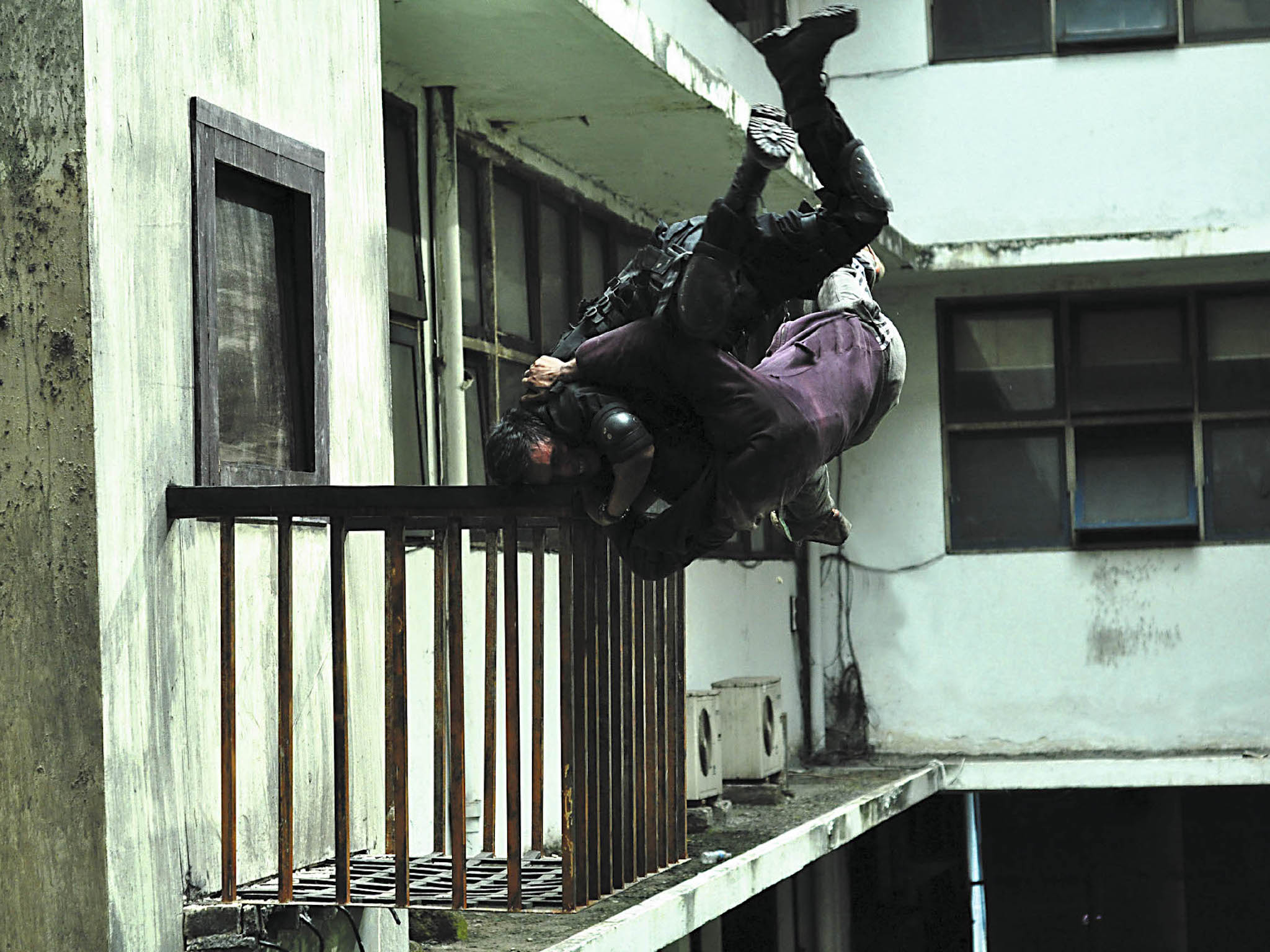
If you can get past all the blood and crumpled skulls, you’ll see The Raid’s many, many film references. Evans – a seasoned director who still speaks with the enjoyable enthusiasm of a 14-year-old fanboy – reels them off, one by one. The scene when the policemen escape into a room and barricade the door against a horde of criminals threatening to break in? Assault on Precinct 13. “Because of costs, there were maybe five actors in the scene, but we wanted to make it feel like 20. So, you keep the baddies in the shadows, making it feel like the good guys are surrounded. Gunshots breaking the glass panel windows, papers flying everywhere. I learnt that from John Carpenter.” That scene when the sound cuts out after a bullet ricochets and slices off a chunk of a man’s ear? Evans got the idea from a Fifties noir film called The Big Combo. And, of course, the scene when Rama kills a man by slamming his throat into the jagged remains of a broken door is all Peter Jackson. “There’s that sequence in Brain Dead when the zombie biker guy is chasing the hero through a broken doorway, and he gets dumped down onto the doorframe and the wood comes out through his back. This was my homage to that,” grins Evans.
To watch The Raid is to be in a perpetual state of wincing: the punches land, the bones snap. For those wondering about the realities of filming such scenes, head hits are a no-go, but the body hits are almost always real. “It’s a combination of things. Firstly, it’s the skill of the actors – their ability to brace and their timing is just impeccable. And secondly, we use a lot of padding,” says Evans, laughing as he admits that padding is not always possible. “Poor Yayan. For that last brutal final standoff, he’s wearing the thinnest vest in the world. We could hide barely anything under that.” A lot of the most severe fight scenes are done with the good ol’ sock-on-the-hand trick. “So, after a kick, we’ll cut to a close-up where we’ve stuck somebody’s arm through a trouser leg and the sock on their hand in a shoe. It’s much easier to control a wrist snap as opposed to a leg, which is just a pendulum swing of power.”
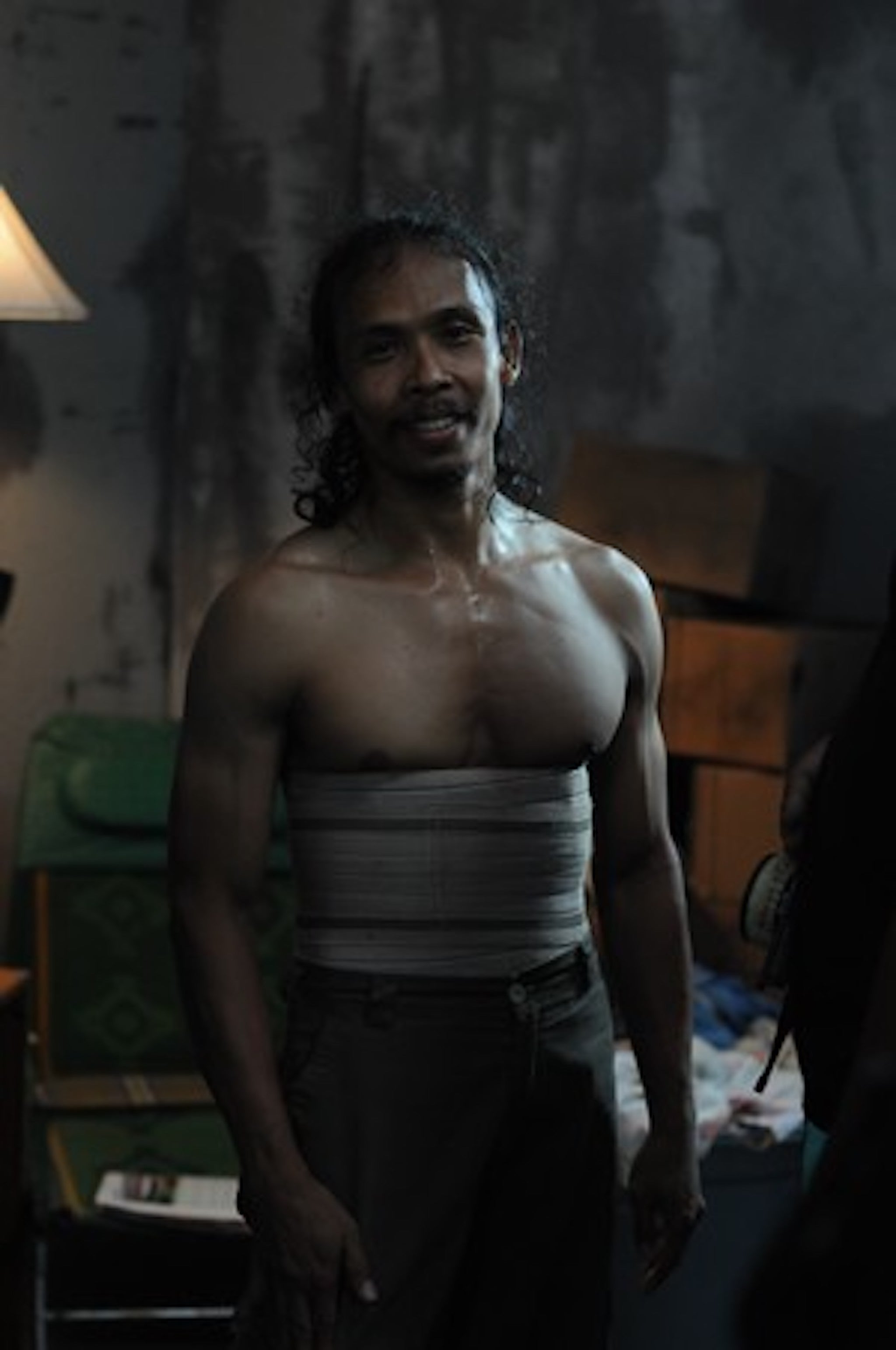
That said, the risk of injury was constant. It’s always there, Evans reminds me. “Someone might fall wrong, or the glass doesn’t break properly, or the weapon makes contact with somebody,” he says. On a film like The Raid, it feels like incidents are bound to happen. Watch the first 10 minutes and you’ll understand what I mean. It’s why they always had a paramedic crew on standby, plus an ambulance ready to go in the eventuality that something goes wrong. Thankfully, Evans says, most injuries were minor. The worst of The Raid – and across every film he has shot in Indonesia, as a matter of fact – happened when shooting what Evans ominously dubs “the backbreaker stunt”. The scene in question sees Rama toss a bad guy off the balcony; said bad guy lands on his back over the edge of a wall, his spine visibly bent in ways a spine should never bend. “The guys operating the wires accidentally pulled too hard and he got slammed horizontally across the wall. He missed all the crash mats so he got pretty bashed up, but he was OK,” says Evans. “It’s a reminder to always make sure you have the precautions in place to make sure everybody comes away from the scene and can go home and relax. Because at the end of the day, we’re only making films; we’re not curing diseases.”
The Raid ends in shocking ferocity, but the road it takes there is equally bloody. In The Independent’s original review of the film, a critic writes tepidly about the incessant action, citing “overkill” as its downfall. Their opinion coalesces with this enduring idea that filmmakers must earn their right to be viscous – being charged with gratuitous violence is a common thing – but it also ignores the fact that with a genre movie such as The Raid, violence is the whole point. There is something liberating about that, says Evans. And if the film’s enduring fanbase 10 years following its release is anything to go by, the world agrees.



Join our commenting forum
Join thought-provoking conversations, follow other Independent readers and see their replies
0Comments